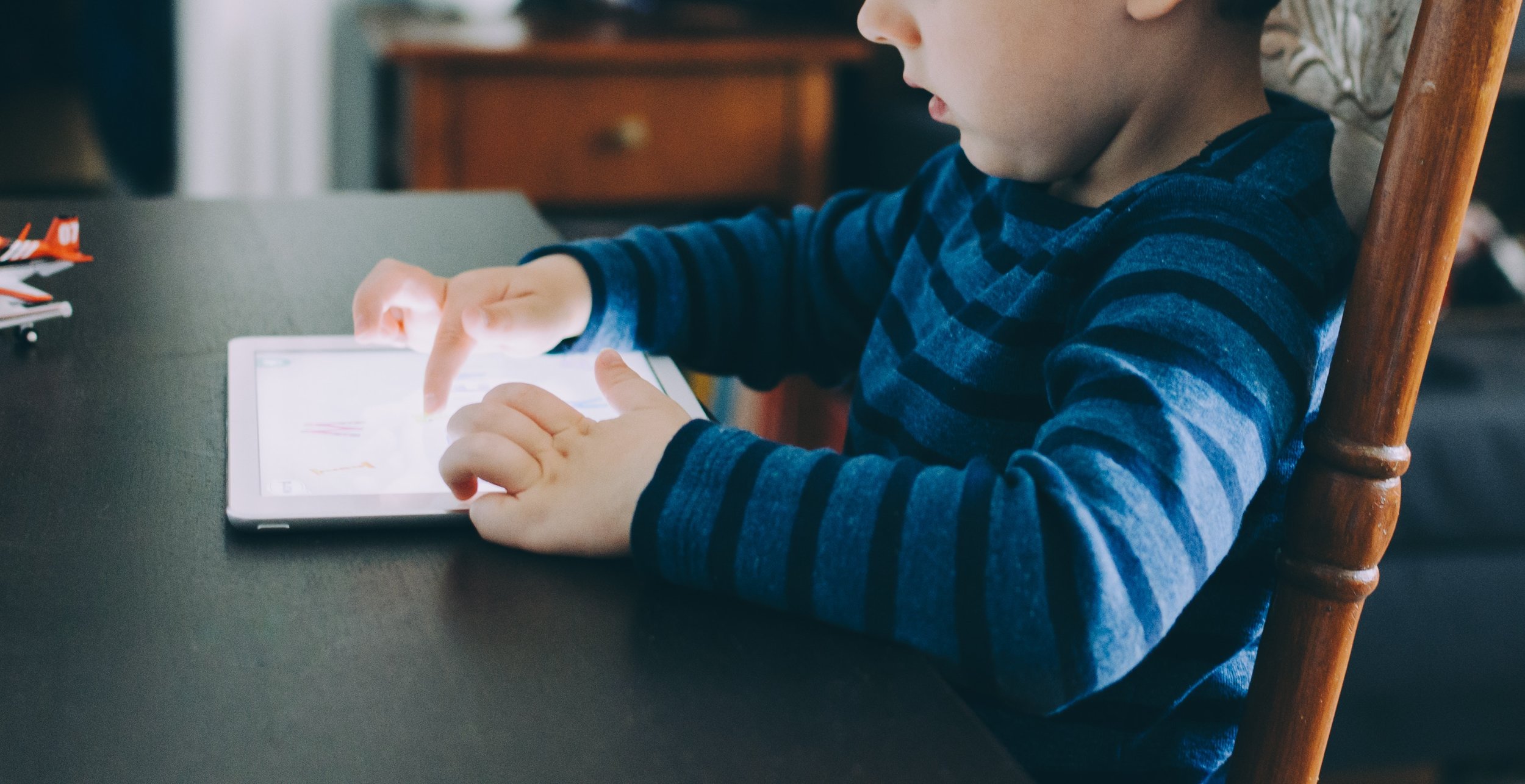iPads, iPhones, and Eye Strain, What You Need to Know About Screen Time
Screen Time and Your Child
What exactly does this mean for your child’s screen time? Your own television watching and computer usage as a child was nothing compared to the current world, wherein screens are everywhere. From the tablet that keeps them occupied during appointments to the iPads being issued by schools to help with homework, kids are spending hours every day staring at screens. While moderate use of a phone, computer, or tablet aren’t shown to directly affect vision, there are other side-effects you should be aware of.
Blue light from the screen could be contributing to dry eyes and an uncomfortable malady called “Digital Eye Strain”. Or “computer vision”. This can cause headaches, blurry vision, dizziness, and vertigo. Additionally, some studies suggest that blue light from the screen could be impacting their sleep.
There are a number of doctors, psychologists, educators, and mom bloggers who have their own expert opinions about how much screen time a child should be exposed to, but we’ll leave the social and developmental decisions up to you. What we can talk to you about are ways to help prevent eye strain in your child.
The 20/20/20 Rule
This rule applies to your own work-weary eyes as well as the delicate peepers of your little people. For every 20 minutes of screen time, take a 20 second break and try to look 20 feet away. Consider it stretching your legs, but for your eyes.

Safer Settings
Children’s tablets often come with an ‘orange mode’, which uses less blue light and adjusts contrast to be easier on the eyes. Additionally, blue lightYour mother told you for years not to sit too closely to the television or your eyes would go bad. If you found yourself wearing glasses before the age of 50, she very likely hit you with a stern “I told you so”, but did your proximity to your Saturday morning cartoons really affect your vision?
We have no intention of arguing with your mother, and for the record, she was probably always right. About everything. Now sit up straight.
But just this once, we’ll say she was only partly right.
It likely wasn’t your front row seat to Bugs Bunny that wrote you the prescription you’re reading these words through. It also had little to do with the fact that you didn’t eat your carrots at dinner, or the fact that you crossed your eyes at your sister that one time when you were 7.
In fact, your close-watching was likely a symptom of a vision problem, not the culprit.
Over the years, nearsightedness has been blamed on everything from diet to genetics, but the truth is a bit more complicated than that.
And to clear up one other misconception about eyes: They do not “go bad”. Your eyes don’t suddenly take up a life of crime, or curdle, or go stale. Your eyes are good, heroes even, in spite of vision impairment.
Myopia, or nearsightedness, occurs when the curve of the eyeball elongates over time. This can be accelerated by any repetitive or extensive visual activity. That means it was more likely you doing your homework for hours on end, or reading by dim lighting that strained your eyes to the point of impairment.
Blocking screen protectors are available to fit most screens.
While these are excellent precautions, nothing takes the place of your judgement. Be sure to set usage alerts and parental controls to limit screen time and encourage your child to seek sights out in the wild.
90’s: “Don’t sit too close to the TV!”
2019:

Computer Glasses
Your grandparents had “cheaters” and your parents had reading glasses. A new enemy means a new approach to vision, and new tech to counter the effects. When you’ve been staring at your screen all day and your eyes begin to feel the strain, your initial response is to lean closer to the screen, solving the short-term problem, but contributing to long term issues. Computer glasses are approximately 60% of the magnifying strength of reading glasses, allowing you to remain a safe distance from the computer without straining.
Your Mom Was Right About Posture
Be sure to provide a safe, ergonomic place for your child when they are using their phones, computers, and tablets. Neck injuries from staring down at a screen can exacerbate fatigue and headaches. While you’re at it, check your own work space and screen habits. Staring down at your phone can be damaging to your neck, while thumbing the screen can cause wrist and hand discomfort.
You can only limit their screen time for so long. At some point, your example overrides your rules. Be sure you’re reminding them that there are plenty of hilarious, wonderful, and interesting things happening outside of their phones.
Schedule Distractions
Set your own alarms to remind yourself to take a break. Step outside with your children and make some real-world memories together. It’s good for your eyes, your brain, and your heart! These years can be full of minefields, tantrums, meltdowns, and miscommunications, but they go fast! It won’t be long before you’re sharing a cup of coffee with your child and telling them ‘I told you so’ about their bifocals.
No matter how you monitor screen time, or how you ease the ache of eye strain, ilumin wants to keep your eyes healthy for life. If you have concerns about your child’s vision, or if your computer time has you thinking of a stronger prescription, we’re ready to talk about your options!






